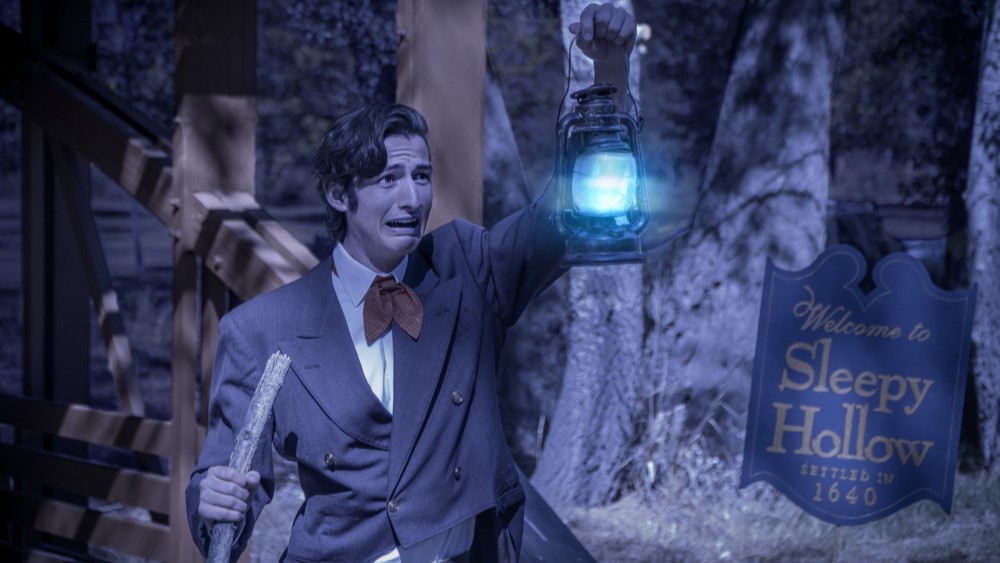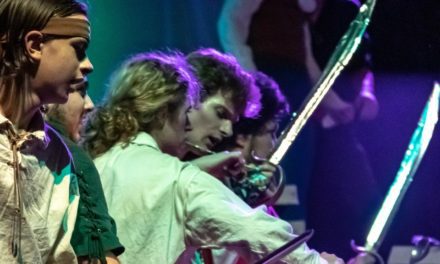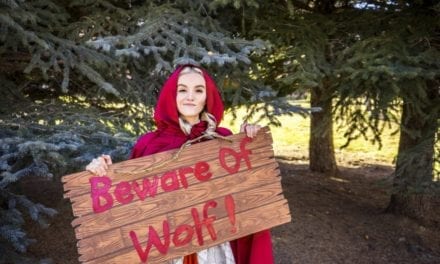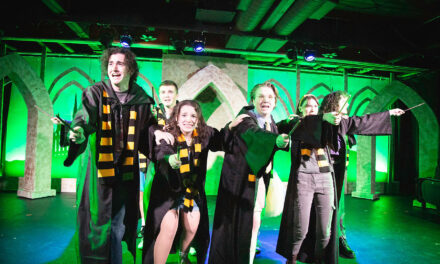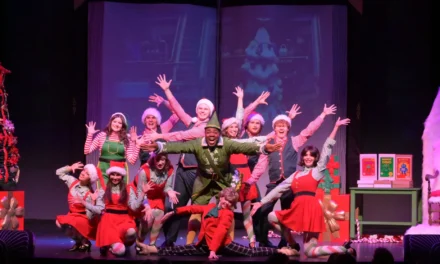OREM — Sleepy Hollow: A Musical Tale is a fun, hour-long adaptation of the story of Ichabod Crane and the Headless Horseman. Best for kids in third through sixth grades, this adaptation of Washington Irving‘s story is a safe, child-friendly outing for families.
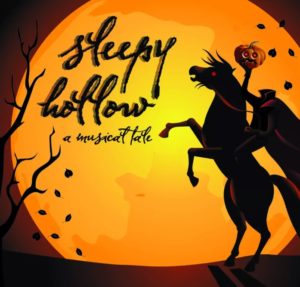
Show closes November 4, 2022.
The script of Sleepy Hollow has an enjoyable twist: modern trick-or-treaters go back in time and experience the story themselves. This allows kids experienced what Halloween (or Hallow’s Eve) was like in Sleepy Hollow, New York, back in 1790. Events include going to school, attending the evening dance party, and listening to the spooky mysterious tales from the Sleepy Hollow residents. When it was time to go home, the children followed Icabod in an attempt to get back to their own time. The ending was less satisfying, with the kids moving forward in time before any scene with Icabod being chased by the headless horseman. I had hoped for a more exciting and scary finish.
Director Kelsey Thompson had some wonderful scenes I enjoyed, like when the kids were fighting at the bridge, and when Icabod was wrestling with the horse’s rope. One particularly enjoyable scene that Thompson crafted occurred when Brom Bones (played by Daniel Eklund) snuck up on Icabod to scare him during the storytelling.
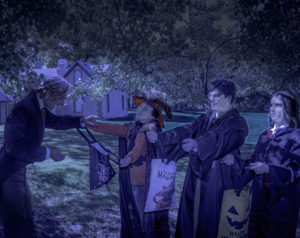
Photo by Rachael Gibson.
Choreographer Rebecca Boberg helped make the musical numbers fun and interesting. “Endless Halloween” and the tap number that progressed from less skilled to very difficult moves were both enjoyable to watch. I appreciated the way Boberg showcased the individual dancing talents of the actors, such as when Maria Stephens (playing Charlie) landed the splits at the end of a song. On the other hand, most of the time the characters were dancing in a line across the front of the stage, and I would appreciated some more creative dance formations.
Joshua Jones played Ichabod Crane and was excellent in the role. Not only did he have the right look for Ichabod, but Jones embodied the mannerisms of the character surprisingly well. Moreover, his tap number was fun and so astonishing at the end when he executed multiple “wings” (a tap dancing move) in a row, just like a gawky Shirley Temple. I also enjoyed Ichabod’s attempt at courting Katrina (played by Sarina Hansen) as he constant messed up and clumsily tried to be the gentleman.
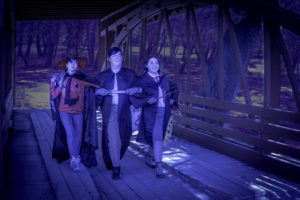
Photo by Rachael Gibson.
Hansen had another enjoyable scene with Darcie Sanders, who played Trudy, where they had tea and hilariously compared the two men (Icabod and Brom) using teacups. Hansen was skilled in her singing and was very engaging as a performer. Sanders had a good focus and was able to make the more mild scenes come to life, like the first Sleepy Hollow scene.
The spooky set was designed by Shawn Herrera. The backdrop during the spooky walk home was awesome, with large dark trees and fog, including real fog coming out from the sides of the stage. It made a great stage picture. I also liked how the bridge could spin to show the trick-or-treaters going back in time. Sadly, there was no depiction of a horse for Ichabod, and the Headless Horseman was only hinted at with a small outline that lit up on the backdrop. Perhaps that was a props choice, and though I enjoyed the other props used (like the tea set), I wish props designer Christy Norton could have made a cool horse or two for the end chase.
The whole show built up to the horse chase scene, and to have it missing was a huge disappointment. The book, lyrics, and music for Sleepy Hollow: A Musical Tale were written by Janet Yates Vogt and Mark Friedman and I wish they had added that scene. The script also alluded to a scene that never came, in which Ichabod arrives at the school and teaches the students — including the new trick-or-treaters from the future. It would have been fun to see that.
However, Sleepy Hollow: A Musical Tale was still enjoyable overall, and my daughter requested we see more shows like that after it was over. It is a fun choice for kids to enjoy the Halloween season, and the cast, directors, and designers bring a lot of talent to the show. I recommend the show for families, but not for younger children, because the complex story may de difficult for children under 8 to understand.

This review was supported by a generous grant from the Orem CARE program.

